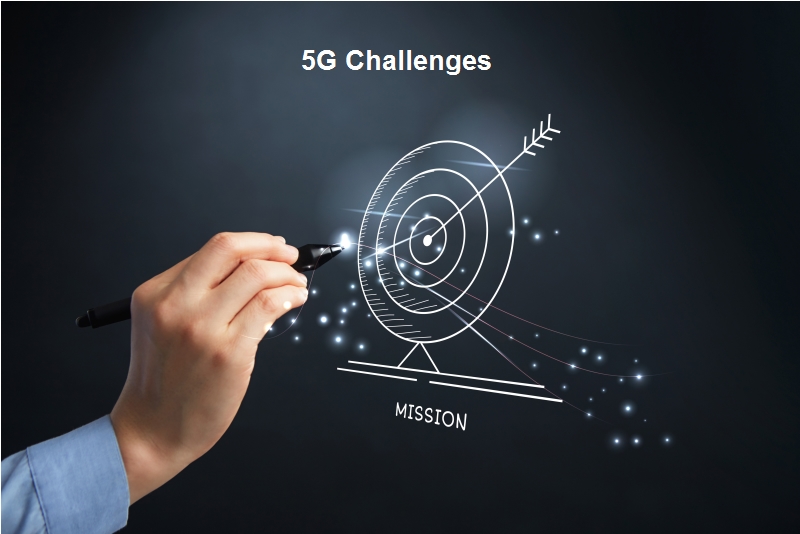 We saw how 5G is all set to be the game-changer in the coming years in the previous blog. It is not just a simple upgrade; it promises to transform our personal and professional lives completely.
We saw how 5G is all set to be the game-changer in the coming years in the previous blog. It is not just a simple upgrade; it promises to transform our personal and professional lives completely.
But like every technology, it comes with its challenges. Many of you would find yourselves questioning how far 5G will be viable? Will the developed and developing countries adopt the model at the same time? Do we have the required infrastructure for this new technology?
This piece will look at the top challenges expected during 5G network deployment. So, let’s dive in:
Scarcity in 5G devices:
If we are to take complete advantage of 5G capabilities, we require 5G-enabled devices on both sides of the connection. Today, there are not enough 5G devices available in the market to let that happen.
According to a survey, only 4% of consumers own a 5G smartphone and a 5G subscription globally. The main reason behind this is the complex nature of 5G architecture and a global shortage in the number of engineers skilled in the cutting-edge technology to crack the codes and set up 5G enabled devices.
Such a scenario presents opportunities for the chip makers to design chips that can support 5G devices with advanced technologies. Currently, a few android handsets use 5G to their advantage. Even Apple has shifted to 5G capable iPhones in mid-2020.
Security and privacy concerns:
Compared to previous generation networks, 5G has far  more traffic routing points. To be completely secure, all of them would need to be monitored—the more the number of traffic points, the greater the risk of security breaches. Moreover, many low-end IoT device manufacturers don’t take security seriously, and hence, their devices can be easily hacked, giving access to the entire network.
more traffic routing points. To be completely secure, all of them would need to be monitored—the more the number of traffic points, the greater the risk of security breaches. Moreover, many low-end IoT device manufacturers don’t take security seriously, and hence, their devices can be easily hacked, giving access to the entire network.
Another critical issue is that, in the case of 5G, tracking a user’s location without their permission is relatively more straightforward. 4G network has a broader coverage area as the signal is broadcasted from a single cellular tower. On the other hand, 5G has a much smaller coverage area, and the signals cannot penetrate walls as good as 4G. Thus, 5G networks require many smaller antennas and base stations placed indoors and outdoors.
Every time a user connects to a 5G antenna, one can pinpoint a user’s location down to their building based on which tower/antenna the user communicates with.
Spectrum Availability and Cost:
5G network needs a frequency of around 300GHz as they have a high speed of delivery, which is at least 20 times more than LTE networks. But the availability and cost of spectrum bands is a big issue for the operators. They would need to bid for these higher spectrum bands as they continue to build and deploy 5G wireless networks.
Spectrum is also expensive to manage. For instance, substantially more investment is needed to deploy a more spectrally efficient technology such as 5G. In some cases, the investment includes site equipment that pushes costs upwards. Furthermore, sophisticated systems must monitor and optimize spectrum use, which increases CAPEX and OPEX.
Building complex and dense networks:
As mentioned earlier, 5G networks shall have a lot more devices and equipment than previous generations. Making them many times more complicated and dense. To illustrate, a single standard 4G macrocell can serve an area of approximately 25 square kilometers, whereas, with 5G, it will take 20 or more cells, with their respective antennas and RAN hardware, to cover the same area.
Thus, setting up such a dense and complex network shall be a big challenge and incur high costs. Only a few areas may get 5G to start with, and the more difficult geographies shall take time.
Conclusion:
On the road of transition to this new generation of wireless networks, operators are bound to face many challenges, leading to rollout delays. However, whenever we experience 5G, we can hope that its benefits will be worth the challenges and overcome security and privacy concerns.
We at Rucha Yantra are very excited about its adoption. We shall continue in the next blog with some specific applications of 5G. Stay tuned to our Knowledge Corner for regular updates.


